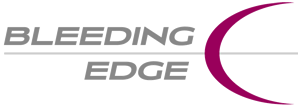The world of SEO has undergone a massive transformation over the past few years. Gone are the days when stuffing your content with keywords guaranteed a top-ranking spot on Google. Instead, search intent—the reason behind a user’s query—has become the dominant ranking factor.
And thanks to AI, search engines have become smarter than ever at figuring out what users really want. If your content doesn’t align with search intent, it doesn’t matter how well-written, keyword-optimized, or visually appealing it is—you won’t rank.
So how can businesses, marketers, and content creators win the search game in 2025? It starts with understanding search intent, AI-driven ranking factors, and how to create content that actually answers users’ needs.
What is Search Intent?
Search intent (also called user intent) refers to the goal behind a search query. When someone types something into Google, they’re not just looking for words that match their search—they’re looking for information, a specific website, a product, or a solution to a problem.
Google’s AI-powered algorithms have evolved to the point where they can detect the intent behind every search with remarkable accuracy. This means your SEO strategy must match user intent to be effective.
Hypothetical Example: Search Intent in Action
Imagine two users searching for “best running shoes.”
- User A is a casual jogger looking for a comfortable, everyday pair of sneakers.
- User B is a marathon runner needing high-performance, long-distance shoes.
Google’s AI understands that “best running shoes” alone is too broad. So, based on factors like search history, location, and related searches, it tailors results to each user’s intent.
- User A may see a blog titled “10 Most Comfortable Running Shoes for Everyday Use.”
- User B might get a comparison guide like “Best Running Shoes for Marathon Runners: 2025 Edition.”
This is why understanding and optimizing for search intent is crucial—if your content isn’t what the user truly wants, AI will push you out of the rankings.
The Four Types of Search Intent (with Real-World Examples)
Every search query falls into one of four categories of search intent:
1. Informational Intent – Seeking Knowledge
Users with informational intent are looking for answers, explanations, or guidance. These searches often start with:
- “How to…”
- “What is…”
- “Why does…”
- “Best ways to…”
Example:
🔍 Search query: “How does AI affect SEO?”
🧠 User intent: They want an educational, in-depth answer.
🏆 Best content type: A blog post, video tutorial, or infographic explaining AI’s role in SEO.
How to optimize for informational intent:
- Write long-form, well-structured content with clear answers.
- Use headings, bullet points, and schema markup for better readability.
- Include stats, case studies, and expert insights to boost credibility.
2. Navigational Intent – Finding a Specific Page or Brand
Users with navigational intent already know what they’re looking for—they just need a quick way to find it.
Example:
🔍 Search query: “Nike official site”
🧠 User intent: They want to visit Nike’s website directly.
🏆 Best content type: The brand’s homepage, product page, or an official landing page.
How to optimize for navigational intent:
- Ensure your brand name is optimized for search (Google My Business, social media profiles, etc.).
- Use clear metadata so search engines recognize your official pages.
- Keep your site structure clean and easy to navigate.
3. Transactional Intent – Ready to Buy
Users with transactional intent are ready to make a purchase. These searches include:
- “Buy [product]”
- “[Service] near me”
- “Best price for [item]”
Example:
🔍 Search query: “Buy noise-canceling headphones under $200”
🧠 User intent: They are looking for a specific product and price range and are likely ready to purchase.
🏆 Best content type: An e-commerce product page, discount page, or store listing.
How to optimize for transactional intent:
- Use clear CTAs like “Buy Now” or “Check Availability.”
- Optimize for voice search and mobile purchases.
- Implement high-quality product images, videos, and reviews.
4. Commercial Investigation Intent – Comparing Options Before Buying
Users with commercial investigation intent are researching before making a final decision. They’re comparing brands, products, and services to find the best fit.
Example:
🔍 Search query: “iPhone 15 vs. Samsung Galaxy S24: Which is better?”
🧠 User intent: They want a side-by-side comparison before choosing.
🏆 Best content type: A detailed comparison article, product review, or expert guide.
How to optimize for commercial intent:
- Write in-depth product comparison articles.
- Include pros and cons, user reviews, and price breakdowns.
- Use FAQ sections to address common concerns.
The Role of AI in Search Intent (Why SEO is Changing)
AI is completely transforming how search engines understand queries. Here’s how:
1. AI and Natural Language Processing (NLP)
Google’s AI can now interpret meaning, context, and user intent rather than just matching keywords.
2. AI and Personalization
Search results are increasingly personalized based on user behavior. Two people searching for the same phrase may get entirely different results based on their past searches.
3. AI and Search Generative Experience (SGE)
Google’s AI-powered search summaries are providing direct answers—often reducing the need to click on websites. This means your content must be high-value and deeply informative to stand out.
How to Win the Search Game in 2025
- Create content for humans, not just algorithms. AI prioritizes value, clarity, and intent alignment over keyword density.
- Use conversational, natural language. AI favors content that reads like a real conversation.
- Leverage structured data and schema markup. This helps search engines understand your content’s purpose.
- Prioritize mobile and voice search optimization. More users are searching via voice assistants and mobile devices.
Final Thoughts
Search intent is the foundation of modern SEO. AI is constantly evolving, and marketers who understand how to align content with searcher intent will stay ahead of the game.
At Bleeding Edge, we help brands navigate the AI-driven SEO landscape with cutting-edge strategies that drive real results. Want to make sure your content actually reaches your audience? Let’s talk.

Recent Comments